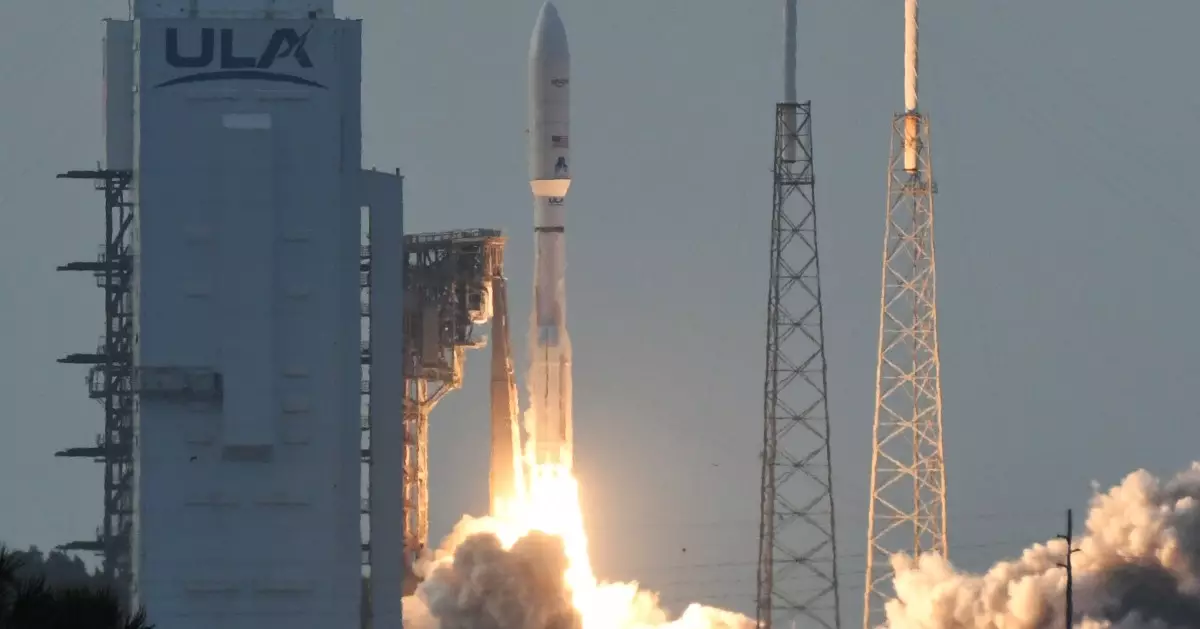In a move that promises to reshape the very landscape of global connectivity, Amazon has successfully launched its first batch of satellites as part of the ambitious Project Kuiper initiative. With the deployment of 27 satellites into low-Earth orbit, the company takes significant strides toward establishing an expansive network designed to provide high-speed internet access to underserved areas around the world. This launch marks a turning point not only for Amazon but for the burgeoning satellite internet industry overall.
Challenging the Status Quo
Project Kuiper is not merely an experiment; it represents Amazon’s commitment to challenging existing players in the satellite internet market, specifically SpaceX’s Starlink. The aggressive plan aims to deploy an extraordinary total of 3,236 satellites, positioning itself as a formidable competitor in the race for market share. In contrast to Starlink’s head start, which boasts over 7,200 satellites in orbit, Amazon’s entry into the field is critically timed as more users migrate to high-speed internet solutions driven by our increasing reliance on digital connectivity.
The launch was conducted using the reliable United Launch Alliance (ULA) Atlas V rocket from Cape Canaveral in Florida. The successful deployment on April 28, after rescheduling due to adverse weather, highlights the meticulous planning and resilience needed for such a complex operation. To hear Amazon CEO Andy Jassy express pride in the collective effort of the team accentuates the extraordinary collaboration between various departments to bring this vision to life.
Promising Performance and Connectivity
Amazon’s satellites were positioned 280 miles (approximately 450 kilometers) above Earth, with initial communications confirming their activation and functionality. This is critical as the company prepares to deliver “high-speed, low-latency” internet access to users by the end of 2023. The assurance of operational satellites bodes well for future deployments and indicates that the company’s ambitious timeline may indeed be achievable if they continue to build on this initial success.
The competitive landscape is evolving quickly, and Kuiper’s development signals a notable response to changing market dynamics. CEO of ULA, Tory Bruno, thoughtfully remarked on the implications of Project Kuiper, underscoring the need for enhanced launch capabilities that benefit both commercial and governmental interests. As Amazon navigates this complex environment, it must remain steadfast in its commitment to innovation and execution efficiency.
Government Regulations and Industry Standards
An added layer of complexity comes with the regulatory landscape governing satellite communications. The U.S. Federal Communications Commission (FCC) has mandated that Amazon deploy at least 1,618 satellites by mid-2026, emphasizing the urgency of their project. This requirement reflects the broader push for reliable internet access, especially in rural and underserved regions where traditional infrastructure struggles to penetrate.
Moreover, as Amazon contends with growing competition, the urgency will only escalate. SpaceX, having finalized its 50th mission of 2025, recently celebrated reaching a significant threshold of 250 dedicated Starlink launches. With permission for up to 34,400 satellites, the industry increasingly resembles a race where strategic positioning and rapid deployment are critical for success.
The Future of Satellite Internet
As many firms, including others like Eutelsat from France and China’s Spacesail, vie for a stake in the satellite internet domain, the potential for innovation and competition is vast. Yet, with low-Earth orbit becoming increasingly crowded, sustained success will depend on not just the quantity of satellites but also the quality of service.
Amazon must navigate these challenges thoughtfully, leveraging its technological prowess and operational expertise to carve out a niche in this evolving sector. While the future remains uncertain, what is undoubtedly clear is that Project Kuiper’s launch is a testament to Amazon’s relentless pursuit of innovation and its ambition to redefine connectivity for billions around the globe.

